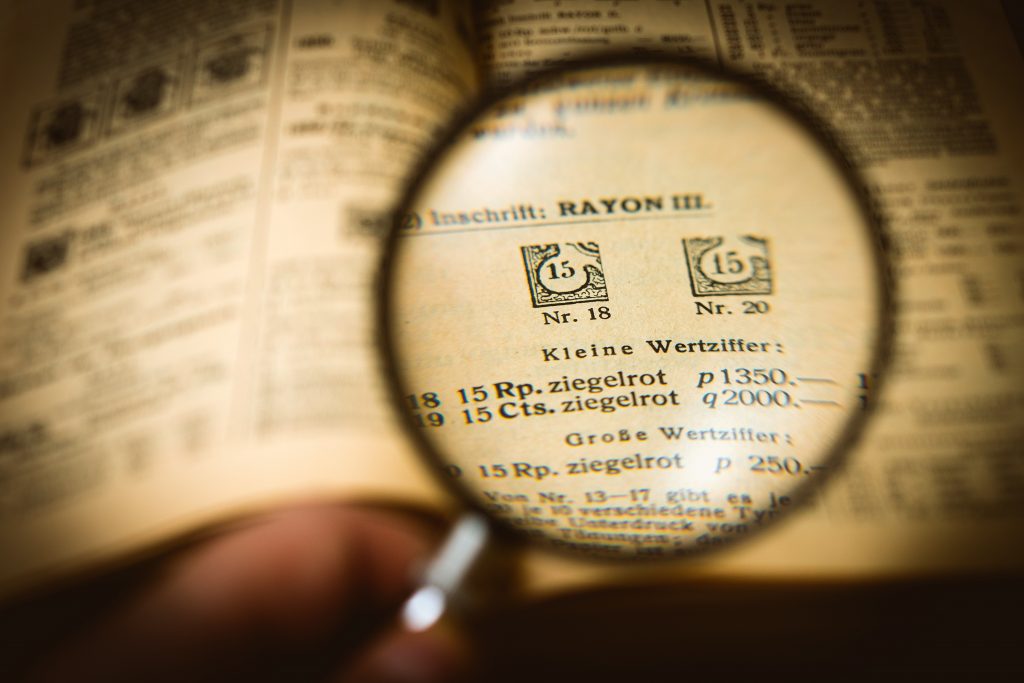Contextualization Comparison Causation Continuity and Change Over Time
When you finally sit down and begin the AP® World History Exam, you will have invested a lot of time, effort, and energy in preparing for that moment. Having a plan of attack for each question is key to getting the maximum number of points for that question. One of your best bets is to make sure that you have developed solid historical thinking skills.
This AP® World History review will outline and discuss the nine historical thinking skills that are central to the study and practice of history. We will then discuss the five most important of those skills needed to excel on the exam. We will also arm you with the strategies needed for spotting these skills on the exam, how to use them to analyze a primary source critically, and how you can include them in your own writing.
Historical Thinking Skills and the AP® World History Exam
As an AP® student, you are expected to have mastered historical thinking skills because every question on the exam will require you to apply one or more of them. Even though every exam question assesses one or more of the skill-based proficiency expectations, historical thinking skills are best put into practice on the Short-Answer, Document-Based and Long Essay Questions (SAQs, DBQs, and LEQs).
These three sections make up 60% of the overall AP® World History total exam score. Do we have your attention? You can see clearly that the CollegeBoard wants you to use those historical thinking skills on the exam.
Historical Thinking Skills and AP® World History Writing Questions
Short-Answer Questions
SAQs will address one or more of themes of the course. You will have to use your historical thinking skills to respond to primary and secondary sources, a historian's argument, non-textual sources (maps or charts), or general suggestions about world history. Each question will ask you to identify and explore examples of historical evidence relevant to the source or question.
Document-Based Question
The DBQ measures your ability to analyze and integrate historical data and to assess verbal, quantitative, or visual evidence. Your responses will be judged on your ability to formulate a thesis and back it up with relevant evidence. The documents included in the DBQ can vary in length and format, and the question content can include charts, graphs, cartoons, and pictures, as well as written materials.
You are expected to be able to assess the value of different kinds of documents, and you'll be required to relate the material to a historical period or theme, thus focusing on major periods and issues. Therefore, it is crucial to have knowledge beyond the particular focus of the question and to incorporate it into your essay to get the highest score.
Long Essay Question
You are given a chance to show what you know best on the LEQs by having a choice between two long essay options. The LEQs will measure how you use your historical thinking skills to explain and analyze significant issues in the world history themes from the course. Your essays must include a central issue or argument that you need to support by evaluating specific and relevant historical evidence using specific in-depth examples of large-scale events taken from the course, or classroom discussion.
What are the Nine Historical Thinking Skills?

The CollegeBoard, in its Rubrics for AP® Histories, tells you that the AP® history courses are designed to "apprentice" you in the practice of history, emphasizing the development of historical thinking skills as you learn about world history. To accomplish this, the CollegeBoard has come up with nine historical thinking skills that will be evaluated on the AP® World History exam.
So, how do you go about developing historical thinking skills? Students of history do this by investigating the past, particularly through exploring and interpreting primary sources and secondary texts. You further refine those skills through the regular development of historical argumentation in writing.
The nine historical thinking skills are grouped into four categories: Analyzing Historical Sources and Evidence, Making Historical Connections, Chronological Reasoning, and Creating and Supporting a Historical Argument.
Analyzing Historical Sources and Evidence
You can best develop your historical thinking skills by analyzing an assortment of primary and secondary sources. Being exposed to a variety of diverse views builds your ability to evaluate the effectiveness of different types of arguments.
Content and Sourcing of Primary Sources – This involves the ability to describe, select, and evaluate relevant evidence about the past from many different sources. When you analyze a source, you should not just think about the content of the source, but you should also look at the interaction between the content and the authorship, vantage point, purpose, audience, format, and historical context of the source. You can then evaluate the usefulness, reliability, and limitations of the source as historical evidence.
Interpreting Secondary Sources – This skill requires you to use secondary sources to describe, analyze, and evaluate the ways that the past is interpreted. This includes understanding the types of questions that are asked, as well as considering how the particular circumstances and contexts in which historians work and write shape their interpretations of past events and historical evidence.
Making Historical Connections
Comparison – This skill involves your ability to identify, compare, and evaluate multiple perspectives on a given historical event so you can make conclusions about that event. This skill also requires the ability to describe, compare, and assess several historical developments within one society, between different cultures, and in diverse chronological and geographical contexts. Comparisons can also be made across different time periods and geographical locations, and between contrasting historical events within the same time period or geographical area.
Contextualization – This skill relates your ability to connect historical events and processes to particular circumstances of time and place, including broader regional, national, or global activities. You will need to determine past events or developments within the wider context in which they occurred and then draw conclusions about their significance.
Synthesis – This skill may be the most challenging of all the thinking skills in the AP® World History course and can be mastered only after spending some time as a professional historian. There are ways that you, as an AP® student, can show your proficiency in the skill of synthesis.
For example, you can make meaningful and persuasive historical connections between one historical issue and other historical issue and similar developments in a different historical context, geographical area, or era, including the present. You can also connect different course themes or approaches to history (e.g., political, social, or cultural) for a given historical issue. Finally, you can use views from an entirely different discipline like economics, art history or anthropology, to better understand a particular historical point.
As an AP® World History student, your essays should include a combination of diverse and conflicting evidence with differing interpretations in an essay to show a well-thought out and convincing understanding of the past.
Chronological Reasoning
Causation – This skill relates to your ability to identify, analyze, and evaluate the relationships among historical causes and effects. You also must tell the difference between those that are long-term and proximate. You should also know the difference between causation and correlation to master this skill.
Patterns of Continuity and Change over Time – This is your ability to recognize, analyze, and assess the dynamics of continuity and change over periods of time of different lengths, as well as your ability to relate these patterns to a broader historical processes or themes.
Periodization – This is your ability to describe, analyze, and evaluate different ways that history is divided into periods. Various models of periodization are often debated among historians, and the choice of specific turning points or starting and ending dates might garner a higher value to one region or group than to another.
Creating and Supporting a Historical Argument
Argumentation – This involves your ability to create an argument and support it using relevant historical evidence. This includes identifying and framing a question about the past and then coming up with a claim or argument about that question, usually in the form of a thesis.
A good argument requires a defensible thesis, supported by thorough analysis of pertinent and varied historical evidence. The evidence used should be built around the application of one of the other historical thinking skills like comparison, causation, patterns of continuity and change over time, or periodization.
Finally, it involves your ability to look at a variety of evidence in concert with each other, identifying contradictions and other relationships among sources to develop and support your argument.
AP® World History Scoring Rubrics for LEQs and DBQs

If you want to get the maximum points for the essay portions of the exam, you will have to know and be able to use the historical thinking skills we have discussed in your essays. Here is a snapshot of the scoring rubrics from the Rubrics for AP® Histories. This CollegeBoard resource also has a full explanation of the historical thinking skills we have covered in this AP® World History review.
Scoring Rubric for the DBQs (7 points)
| Section | Points | Targeted Skill |
| Thesis and Argument Development | 2 | Argumentation |
| Document Analysis | 2 | Analyzing Evidence and Argumentation |
| Using Evidence Beyond the Documents | 2 | Contextualization and Argumentation |
| Synthesis | 1 | Synthesis |
Scoring Rubric for the LEQs (6 points)
| Section | Points | Targeted Skill |
| Thesis | 1 | Argumentation |
| Argument Development: Using the Targeted Historical Thinking Skill | 2 | Argumentation and Targeted Skill |
| Argument Development: Using Evidence | 2 | Argumentation |
| Synthesis | 1 | Synthesis |
What are the 5 Most Important Historical Thinking Skills and how do I Spot them on the AP® World History Test
The CollegeBoard would not identify nine historical thinking skills if they were not all relevant to the AP® World History course and exam, but there are five historical thinking skills that we feel are more important because they can earn you the most points on the writing-based questions (SAQs, DBQs, and LEQs). Those critical historical thinking skills are:
- Contextualization
- Continuity and change over time
- Causation
- Synthesis
- Argumentation
So how can you spot these thinking skills on the AP® World History Exam?
How do I Spot Historical Thinking Skills on the AP® World History Exam?

There are several strategies for putting your knowledge to work when you take the exam. Here are a couple of examples of how you can spot historical thinking skills in an LEQ on the exam.
Continuity and Change Over Time
As we discussed, the historical thinking skill of Continuity and Change Over Time requires you to be able to determine what changed and what stayed the same between different time periods. To get max points, you will also need to explain the reasons for historical continuity AND change over time.
Here is an LEQ question from October 2014 AP® World History Sample Questions (Question 3). See if you can spot the targeted historical thinking skill in this question.
- Using specific examples, analyze continuities and changes in the relationship between labor systems and social hierarchies in the period circa 600 C.E. To circa 1750 C.E.
Remember, a strong essay will require you to support your thesis with specific examples that clearly and consistently show continuities and changes in the relationship between legal systems and social hierarchies between the stated time periods. You will need to also explain the changes and continuities and show the grader that you know and understand the events of the period.
Causation
To review, causation is the ability to identify, analyze, and evaluate causes and effects. You will need to describe the causes and effects of a historical event, development, or process. To get the maximum points, you will also need to explain the reasons for those causes and effects.
Here is an LEQ question from 2016 AP® World History Free Response Questions (Question 3). See if you can spot the targeted historical thinking skill in this question?
- Analyze similarities and differences in the causes of TWO of the following revolutions.
- American Revolution (1775 – 1781)
- French Revolution (1789-1799)
- Haitian Revolution (171-1803)
Remember, to get the maximum points you need to support your thesis with relevant historical evidence. You must also address all parts of the question making appropriate direct comparisons. Don't forget to break down the relevant reasons for the similarities and differences.
Historical Thinking Skills and Primary Sources
How do primary sources relate to historical thinking skills? Primary sources help you develop knowledge, thinking skills, and analytical abilities. When you deal directly with primary sources, you will get engaged by asking questions, thinking historically, making smart inferences, and developing well-thought-out accounts and interpretations of events in the past and present.
Remember, primary sources are pieces of history, often incomplete, and usually come without context. Having historical thinking skills like contextualization will help you to be logical, to look at sources thoughtfully, and to find out what else you need to know to make inferences from the materials.
Next Steps
Now that we have walked through the nine historical thinking skills and highlighted which ones are most important for the exam, you can now practice using those skills in preparing to write your essays for the LEQ and DBQ portion of the AP® World History exam. Remember that these two parts of the exam are worth 40% and using these historical thinking skills will help you to achieve the maximum points for each question.
Make sure you go back and review the Rubrics for AP® Histories, so you know what you have to do in order to get that 7 on the DBQ and a 6 on the LEQ. Preparation is the key to getting a 5 on the exam. If you use the AP® World History tips in the article, you will be well on your way.
To really prepare for the AP® World History Exam, you need to practice writing LEQ and DBQ responses. To take it one step further, you should know exactly what the test-writers are looking for in a response that meets all of the requirements in the scoring rubrics.
Looking for AP® World History practice?
Kickstart your AP® World History prep with Albert. Start your AP® exam prep today.
Source: https://www.albert.io/blog/5-most-important-historical-thinking-skills-for-the-ap-world-history-test/
0 Response to "Contextualization Comparison Causation Continuity and Change Over Time"
Post a Comment